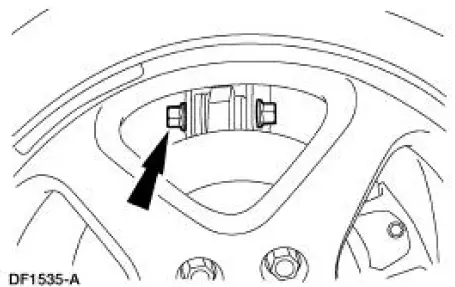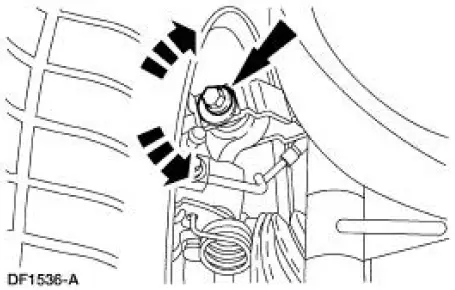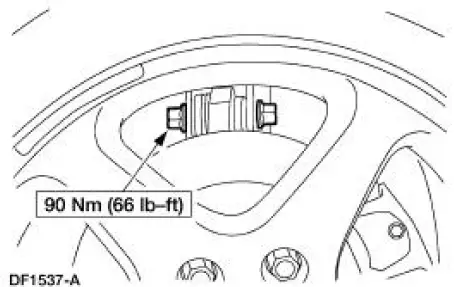Ford Mustang (1999-2004) Service Manual: Camber Adjustment - Rear
1. Loosen the nut.

2. Rotate the bolt and the cam to the correct camber setting.

3. Tighten the nut while holding the bolt and the cam stationary.

4. Recheck the wheel alignment. Follow the manufacturer's instructions. Adjust as necessary.
 Camber and Caster Adjustment - Front
Camber and Caster Adjustment - Front
All vehicles
1. Remove the rivet. Loosen the nuts and bolt.
Vehicles requiring camber adjustment
2. Move the front suspension camber adjusting plate (3B391) to the required
camber setting.
Vehicl ...
 Toe Adjustment - Front
Toe Adjustment - Front
1. Start the engine and center the steering wheel.
2. Turn the engine off, and hold the steering wheel in the straight forward
position by attaching a
rigid link from the steering wheel to the seat ...
Other materials:
Hydraulic Control Unit
Removal
1. Disconnect the battery ground cable(14301).
2. Disconnect the anti-lock-brake control module electrical connector.
3. NOTE: The 4 wheel anti-lock brake system (4WABS) with traction
control is shown , the
4WABS without traction control system is ...
Clutch Pedal - Quadrant and Pawl Assembly
Removal
1. Disconnect the battery ground cable (14301).
2. Loosen the nut from inside the engine compartment.
3. Loosen the nuts from inside the vehicle.
4. Loosen the screw.
5. Disconnect the brake pedal position (BPP) switch electrical connector.
...
Inspection and Verification
1. Verify the customer concern.
2. Visually inspect for obvious signs of electrical damage.
Visual Inspection Chart
Electrical
Central junction box (CJB) Fuse 31 (5A)
Damaged wiring harness
Loose or corroded connections
...
